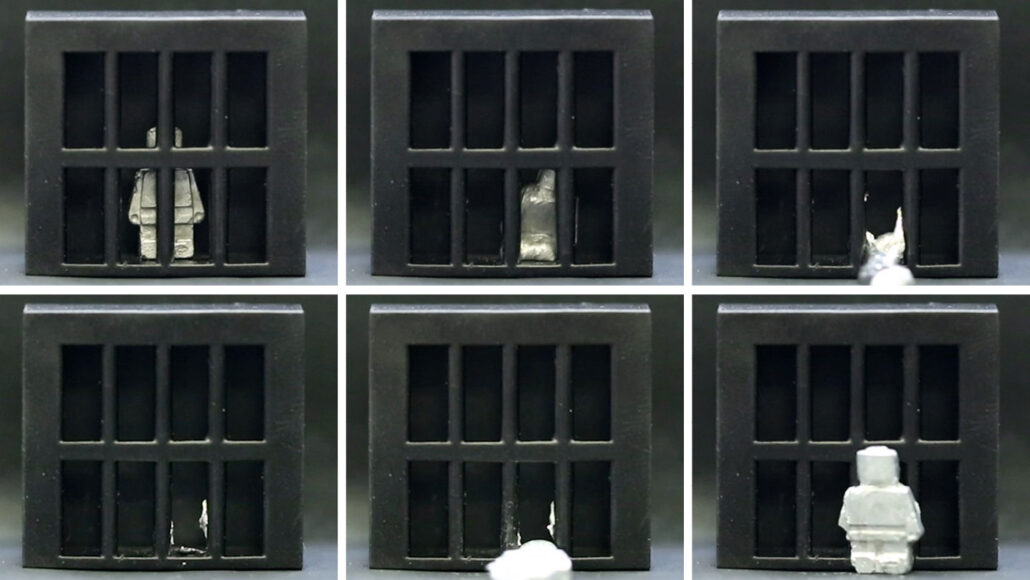These shape-shifting devices melt and re-form thanks to magnetic fields

(TWN)- Shape-shifting liquid metal robots might not be limited to science fiction anymore.
Miniature machines can switch from solid to liquid and back again to squeeze into tight spaces and perform tasks like soldering a circuit board, researchers report January 25 in Matter.
This phase-shifting property, which can be controlled remotely with a magnetic field, is thanks to the metal gallium. Researchers embedded the metal with magnetic particles to direct the metal’s movements with magnets. This new material could help scientists develop soft, flexible robots that can shimmy through narrow passages and be guided externally.
Scientists have been developing magnetically controlled soft robots for years. Most existing materials for these bots are made of either stretchy but solid materials, which can’t pass through the narrowest of spaces, or magnetic liquids, which are fluid but unable to carry heavy objects (SN: 7/18/19).
In the new study, researchers blended both approaches after finding inspiration from nature (SN: 3/3/21). Sea cucumbers, for instance, “can very rapidly and reversibly change their stiffness,” says mechanical engineer Carmel Majidi of Carnegie Mellon University in Pittsburgh. “The challenge for us as engineers is to mimic that in the soft materials systems.”
So the team turned to gallium, a metal that melts at about 30° Celsius — slightly above room temperature. Rather than connecting a heater to a chunk of the metal to change its state, the researchers expose it to a rapidly changing magnetic field to liquefy it. The alternating magnetic field generates electricity within the gallium, causing it to heat up and melt. The material resolidifies when left to cool to room temperature.
Since magnetic particles are sprinkled throughout the gallium, a permanent magnet can drag it around. In solid form, a magnet can move the material at a speed of about 1.5 meters per second. The upgraded gallium can also carry about 10,000 times its weight.
External magnets can still manipulate the liquid form, making it stretch, split and merge. But controlling the fluid’s movement is more challenging, because the particles in the gallium can freely rotate and have unaligned magnetic poles as a result of melting. Because of their various orientations, the particles move in different directions in response to a magnet.
Majidi and colleagues tested their strategy in tiny machines that performed different tasks. In a demonstration straight out of the movie Terminator 2, a toy person escaped a jail cell by melting through the bars and resolidifying in its original form using a mold placed just outside the bars.
6 Month Ago
Trump and Putin to Discuss Ukraine on Tuesday
12 Month Ago
Tiger Chase Terror" - IShowSpeed’s Hair-Raising ..
12 Month Ago
Harris vs. Trump: A Showdown of Visions in Their F..
YOU MAY ALSO LIKE THIS
Robbers Loot Jewelry Shop in Mahottari; Traders Shut Down Market Deman..
Janakpurdham , March 17, 2025 : Traders in Mahottari have launched protests after a group of robbers looted a jewe..
6 Month Ago
Trump and Putin to Discuss Ukraine on Tuesday
Washington,March 17, 2025 – U.S. President Donald Trump has announced plans to speak with his Russian counterpart,..
6 Month Ago
One Injured in Police Firing at Bhathihan, Dhanusha
Dhanusha, March 17 – A clash erupted once again on Monday in Bhathihan, located in Sabaila Municipality, Dhanusha, over the ..
6 Month Ago





